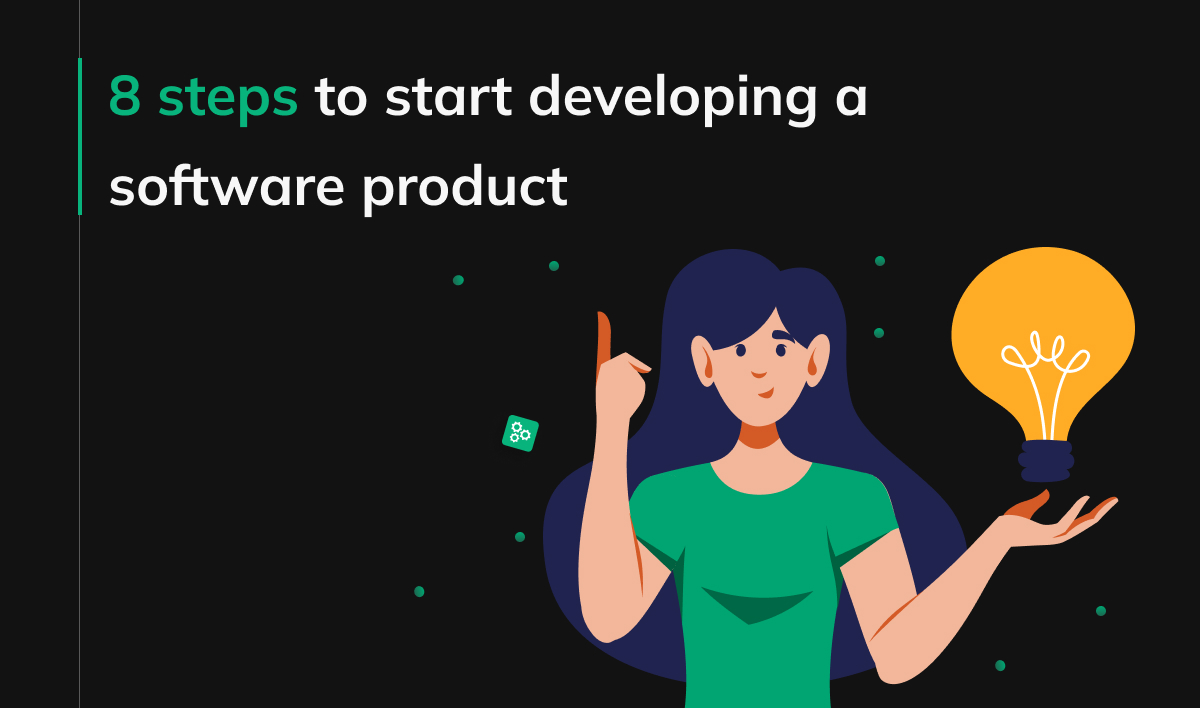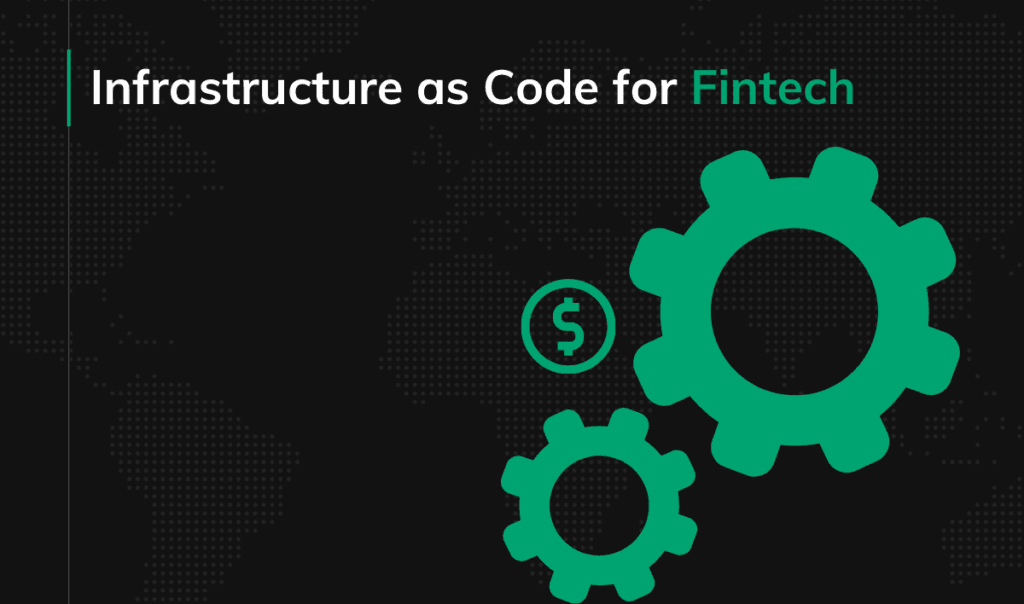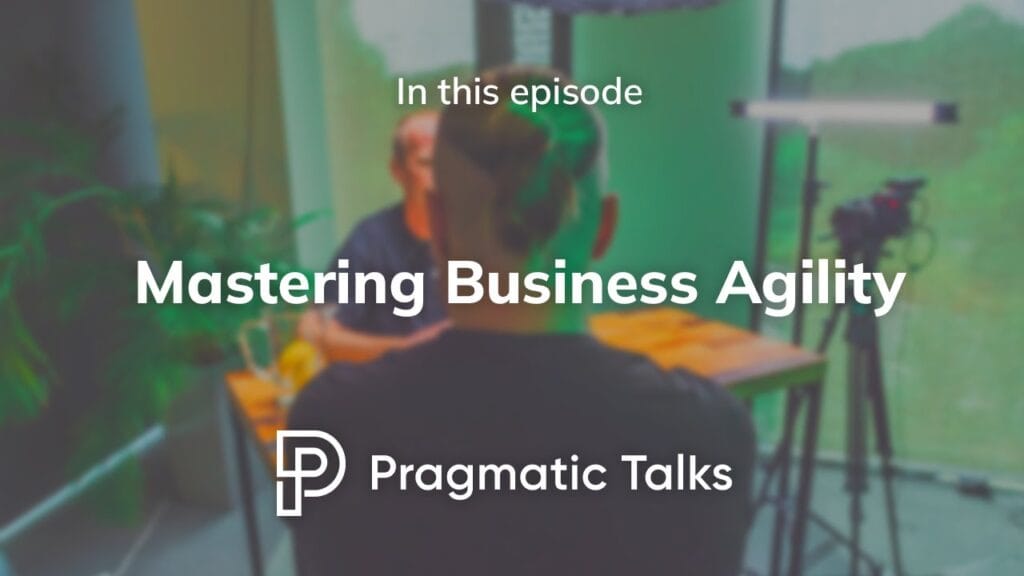8 steps to start developing a software product

Developing a software product is no easy task. It can be pretty daunting, especially for those new to the process. However, it doesn’t have to be as difficult as you might think with the right tools and resources at your disposal.
Here are a few tips to help get you started.
If you’re passionate about creating a product and are willing to put in the necessary effort, it can be a gratifying experience.
There is no one-size-fits-all answer to this question, as the development process for a software product will vary depending on the specific product being developed.
However, some general steps can be followed when starting to create new software products.
What’s the difference between software and product development?
One more thing before we go on to discuss how to develop a software product: what’s the difference between software and product development (because the difference is HUGE and if you’re a business owner – you really should care)?
While closely related, software development and product development are distinct processes with different goals and approaches.
Software development focuses on the technical aspects of creating and maintaining software applications. It involves designing, coding, testing, and deploying software solutions. Software developers are responsible for translating product specifications into functional software components.
Product development, on the other hand, encompasses the entire lifecycle of a product, from conception to launch and beyond. It involves market research, ideation, design, prototyping, testing, marketing, sales, and ongoing support. Product managers, who are responsible for overseeing the entire product lifecycle, play a crucial role in product development.
The key differences between software and product development can be summarized as follows:
- Scope: Software development is a subset of product development. It focuses on the technical aspects of creating software, while product development encompasses a broader range of activities, from market research to marketing and sales.
- Goal: Software development aims to deliver outputs, such as software features or applications. Product development, on the other hand, focuses on generating outcomes, which means creating products that solve real user problems and achieve business goals.
- Leadership: Software development is typically led by developers or engineering teams. Product development is led by product managers, who are responsible for aligning the product with market needs and business objectives.
- Customer focus: Software development may focus more on technical requirements and specifications, while product development places a stronger emphasis on understanding user needs and behaviors.
- Lifecycle: Software development is typically focused on the creation and maintenance of software products. Product development encompasses the entire product lifecycle, from ideation to launch, ongoing support, and potential iterations or updates.
In essence, software development is the technical backbone of product development, while product development drives the overall strategy, market fit, and success of a product
1. Figure out your idea
There are many different aspects to consider when developing a digital product.
The first step of product development is to figure out an excellent idea for a product that you think people will use and enjoy. This process is called the ideation phase.
Once you have your idea, you need to validate it by conducting market research and speaking with potential customers.
After validating your idea, you need to start putting together a team of developers, designers, and other professionals who can help bring your product to life or choose the right software product development company to do that for you.
Creating a good product roadmap and product backlog consisting of crucial product features is the right task for the product owner/product manager.
2. Research the market and competition
After you have an excellent idea for a product, it’s essential to research the market and competition to gain a competitive edge over other players in your industry.
This will help you validate your concept and ensure that there is a demand for your product. It will also help you determine what features your product needs to be successful.
Once you’ve done your market research, you should understand your target market and what they look for in a product.
There are many different methods of conducting market research, but some of the most popular include surveys, interviews, focus groups, and competitor analysis.
What do I need to learn from market and competitor research?
- Your total addressable market (TAM) size – How many people would potentially use your product?
- Your serviceable available market (SAM) size – How many of those people can you reach with your marketing efforts?
- Your serviceable obtainable market (SOM) size – How many of those people can you reach and sell to, given any obstacles in your path?
- Your competition – Who are they, and what do they offer?
- Your market trends – What is the current trend in your industry, and how will it impact your product?
- What is your possible competitive advantage, and how does it compare to competitors?
You may try to do this on your own or hire a market research firm or experienced UX designers to do it for you. Many companies offering product development services have such services in their offer.
It would help if you did not cut the costs at this stage of product development since it will determine the success of your product. It will also help you save time and money in the long run.
At this stage, results from market research and initial user feedback are the cheapest to get and the most valuable resource you will have.
Changing anything in your product idea at this stage of the product development process is 10+ times cheaper than in the later stages. You should iterate in this phase until you learn enough to move forward.
3. Create a prototype
The next step is to create a prototype of your software product. This will help you validate your idea with potential customers and get feedback on the product before you start developing it.
Without any software development, creating a basic clickable prototype can be done with many different tools, such as InVision, Adobe XD, or Figma. A good UX designer will do that for you.
You may also use some no-code or low-code tools such as Webflow, Bubble, or FlutterFlow.
Creating a prototype will help you validate your idea and get feedback on the product before you start developing it. In addition, this will save you time and money in the long run, as it’s much cheaper to make changes to a prototype than to a developed product.
After you’ve created your prototype, it’s time to test it with potential customers.
When testing your prototype with customers, you’ll want to pay attention to their feedback and note areas where they think the product could be improved. Then your designers should iterate on the prototype and improve it until the feedback is positive enough to start developing the MVP and actual product. Companies offering software product development services will do that for you.
4. Get users’ feedback
After you’ve created a prototype of your software product, it’s essential to get users’ feedback and incorporate it into your MVP and final product. This feedback will help you improve the product and make it more successful.
There are many ways to get user feedback, but some of the most common include surveys, interviews, focus groups, and usability testing.
When conducting user research, paying attention to what users say and how they interact with the product prototype is essential. Then you can use that feedback to improve it and reiterate the prototype.
This agile development process will help you achieve your business goals and business objectives.
5. Develop a Minimum Viable Product
The next step in your product development is to develop a minimum viable product (MVP).
This version of your product usually requires normal software development. It has the core features and functionality implemented, but it may not have all the bells and whistles you ultimately want to include.
Your goal is to get the MVP out to users as quickly as possible so you can start getting some accurate data alongside users’ feedback. Here again, you should iterate and make improvements. Furthermore, data and feedback will help you determine which features to include in future product versions.
The MVP is also crucial because it helps you validate your hypotheses about the product and the market and prove it with data. If your MVP is successful, you’re on the right track and can continue developing the product.
6. Iterate and grow the product
Product development is all about the continuous iterations of building, measuring, learning, and repeating this process.
A good software development process and cutting-edge technologies are not enough to ensure excellent product quality.
Product quality depends on its users’ perception, which is why collecting feedback early and implementing changes based on that is so important.
Any product development services provider with a proven track record of successful products will tell you that every software product development process decision should be based on data, feedback, and research.
Product development is all about learning about the product’s users and needs.
Of course, technical expertise, proper quality assurance, a great product development team, and project management are important too, but it won’t be enough to ensure market success if you don’t listen to your users.
7. Maintain and update the product based on users’ feedback
As your product grows and more users start using it, you’ll need to continuously update it based on their feedback. This includes adding new features, fixing bugs, and improving the user experience. Otherwise, your product will become outdated, and users will start to lose interest.
You also need to continuously track your competitors so you can stay ahead of them. This way, you can anticipate their moves and make sure your product is always the best option for users.
It’s also important to keep an eye on changes in your industry so you can adapt your product accordingly. For example, if there are new regulations, you’ll need to update your product to comply with them.
8. BONUS: Marketing your product
You should always work on your product marketing during your product development. This means creating awareness about your product, generating interest, and getting users to try it.
It would be best if you did not wait with marketing until the full production release of your software solutions. Instead, you need to start marketing early on, even before having a product. This way, you can validate your idea and get even more user feedback to improve the product.
Some everyday marketing activities include content marketing (e.g., blog posts, ebooks, and whitepapers), social media marketing, search engine optimization (SEO), and lead generation.
You can also participate in tradeshows and events or do a webinar or podcast. Again, there are many options, and you need to find the ones that work best for your product and target market.
The most important thing is starting early and being consistent with your marketing efforts. Marketing is an essential part of any software product development.
Summary
The above steps are a high-level overview of how to develop a software product. However, the details will vary depending on the specific product and industry. This is just meant to be a general guide.
Suppose you want to learn more about product development. In that case, we suggest booking a session with our startup business consultant and simply asking all the questions that bother you.
You may also like to check our product development services to learn more about how we do product development and why it is worth choosing us as your product development partner. Our cross-functional teams use modern technologies and agile methodologies to meet customer expectations and build great custom products.








